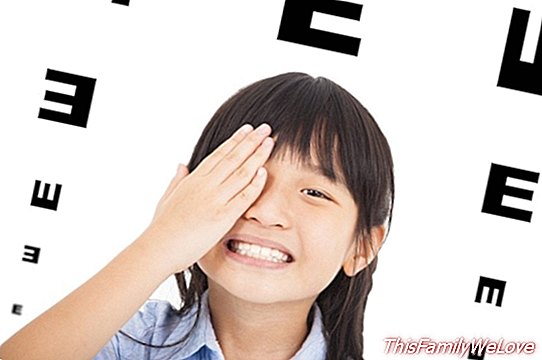Vague eye: so we can detect it in children

The lazy eye or lazy eye, that medically receives the name of amblyopia, consists in the scarce vision of one of the eyes, although some patients with very high graduations, can have both eyes vague, improving thanks to the use of the glasses.
This poor vision is due to the lack of use of that eye during visual development, a period that ranges from the birth of the child to eight years of age. Therefore, it is a pathology with a high incidence among children, in fact, it is the main cause of poor vision in children. About 3% of the school population have amblyopia.
"My son complains that his head hurts when he reads." This can be one of the affirmations that we find in the consultation of ophthalmology of Dr. Marta Suárez-Leoz, Chief of Service of this specialty in the Hospital La Milagrosa of Madrid.
The causes that cause a lazy eye can be several and be caused by other visual alterations such as strabismus, myopia or astigmatism, among others. "It is important to go to the ophthalmological reviews", explains Marta Suárez-Leoz, since "it is where this anomaly is usually detected." The child adapts his eyes to get the best possible vision and for this reason sometimes, this pathology can happen unnoticed his parents. " According to the doctor, it is advisable to go to the ophthalmologist as of 3 or 4 years and maintain annual reviews or as often as the specialist indicates in each case. Amblyopia is treated during childhood and the earlier it starts, the better the result.
The lazy eye and strabismus
Strabismus and lazy eye are closely related. When a child has strabismus, what happens is that the eyes do not focus on the same object at the same time and each eye sends a different image to the brain, causing the child to see double or have blurred vision. It is then when the brain decides to "cancel" the function of one of the eyes and keep the sharp images offered by the "good" or "stronger". This causes the "weak eye" to become vague or lazy.
The problem of the lazy eye, says the specialist, is that if it is not corrected in time, or treatment starts early, it can leave a permanent visual defect in life.
How can we know if the child has a lazy eye?
Dr. Suárez-Leoz indicates a series of symptoms that if persistent should be warning signs for parents and good indicators to go to the review with the specialist. These symptoms are:
- Deviation of an eye when fixing the sight in a point
- Getting close to objects or books
- Watch television sideways
- Complain about constant headaches or blurred vision
- Blinking eyes persistently
Updated techniques to correct the lazy eye
When amblyopia is due to strabismus or a graduation defect is started by putting the glasses on and if it does not recover it must be treated with eye occlusion. If the problem is a congenital cataract or a drooping of the eyelid, it will be assessed if the child should be operated on.
The most common treatments are eye patches, filters in glasses or glasses penalized and eye drops. They are intended to cover or cloud the vision of the good eye, helping to stimulate the vision of the bad eye. The hours of use of the patch depends on each case, age, vision defect.
The treatment has several phases. In the first, the eye is treated until the maximum possible vision is recovered and then a maintenance treatment is continued to consolidate the visual recovery until a minimum of 9-10 years of age to prevent the vision from worsening again. This maintenance phase is very important to follow.
"The patches are purchased in pharmacies, there are different formats and sizes, they are put on the face, covering the healthy eye, at the pace advised by the specialist, if the child has to cover only 1-2 hours a day, we recommend Take advantage of the time you spend on reading, computer, video games or television activities, "says Dr. Suárez-Leoz.
The filters and the optical penalties are another system to treat the lazy eye and what they intend is to punish the vision of the good eye through the glasses. They are used for mild or moderate cases or for the consolidation treatment of amblyopia. As the doctor explains, "for this treatment to work it is very important that the child always wear the glasses on and not look over them".
The drops that are used to treat the lazy eye are put in the good eye to make it difficult to see at a lower level than that of the bad eye and thus favor the work of this lazy eye. It can be a very effective technique if the patient is properly chosen.
Dr. Marta Suárez-Leoz. Head of the Ophthalmology Service of La Milagrosa Hospital in Madrid




